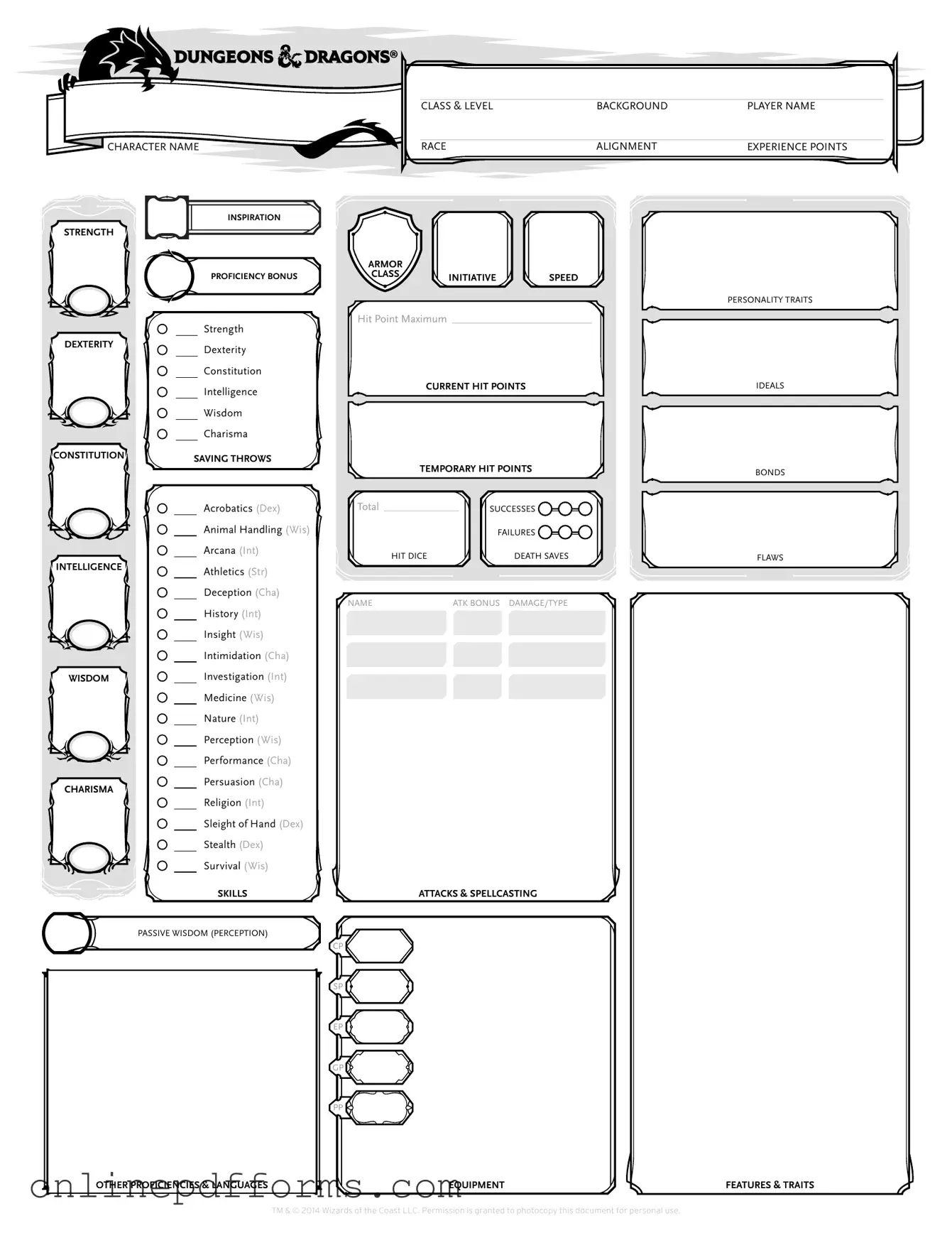The Dungeons & Dragons (D&D) Character Sheet is similar to a role-playing game (RPG) character profile. Both documents serve as a comprehensive summary of a character's abilities, skills, and background. In RPGs, players create profiles that detail their character's strengths, weaknesses, and personal history, similar to how a D&D Character Sheet outlines a character’s race, class, and attributes. This allows players to immerse themselves in the game, providing a clear understanding of their character's capabilities and narrative journey.
A video game character profile shares similarities with the D&D Character Sheet. Video games often require players to customize their characters, selecting traits, skills, and appearances. Like the D&D sheet, these profiles track attributes such as health, experience points, and special abilities. Both documents enhance the gaming experience by allowing players to engage with their characters on a deeper level, fostering a sense of ownership and investment in the game.
A tabletop role-playing game (TTRPG) character sheet is another document akin to the D&D Character Sheet. TTRPGs often include various systems and rules that dictate character creation and development. These sheets typically capture a character's stats, equipment, and background, mirroring the D&D format. Players use these sheets to navigate gameplay, making decisions based on the information provided, just as they would with a D&D Character Sheet.
A character dossier in a live-action role-playing game (LARP) resembles the D&D Character Sheet as well. LARP participants create detailed character dossiers that include background stories, motivations, and physical traits. These documents help players portray their characters authentically during live interactions. Similar to the D&D sheet, the dossier serves as a reference point for players to maintain consistency in their character's actions and decisions throughout the game.
A campaign setting guide often includes character templates that are similar to the D&D Character Sheet. These guides provide players with pre-defined characters or archetypes that can be used within the campaign. Each template outlines abilities, traits, and backstory elements, allowing players to quickly integrate into the game. Just like the D&D Character Sheet, these templates streamline character creation and enhance the storytelling experience.
A board game character card may also bear resemblance to the D&D Character Sheet. In many board games, players use character cards that outline specific abilities, strengths, and weaknesses. These cards serve as quick reference tools during gameplay, much like the D&D sheet does. Players can easily assess their character's capabilities and make strategic decisions based on the information presented.
A character bio for a novel or story can be compared to the D&D Character Sheet. Writers often create detailed bios for their characters, which include personal histories, motivations, and defining traits. This document helps authors maintain consistency in character development throughout the narrative. Similar to the D&D Character Sheet, a character bio serves as a foundation for understanding how a character will interact with others in the story.
A character sheet for a card game shares similarities with the D&D Character Sheet as well. Many card games require players to manage specific character stats and abilities through dedicated sheets. These sheets help players track their character's progress and strategies during gameplay. Like the D&D sheet, they serve as essential tools for understanding the character's role within the game.
A character creation form used in theater productions is akin to the D&D Character Sheet. Actors often fill out forms that detail their character's traits, motivations, and relationships with other characters. This information aids in character development and helps actors embody their roles. Just as the D&D Character Sheet provides a framework for players, the theater form helps actors understand their characters more deeply.
Finally, a personal development plan (PDP) can be compared to the D&D Character Sheet in terms of tracking growth and abilities. A PDP outlines an individual's skills, goals, and progress over time. Similarly, the D&D Character Sheet tracks a character’s abilities and experiences gained throughout the game. Both documents serve as tools for reflection and planning, helping individuals or characters to evolve and reach their potential.
